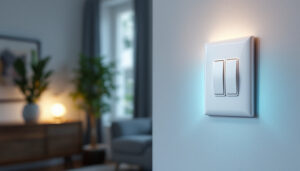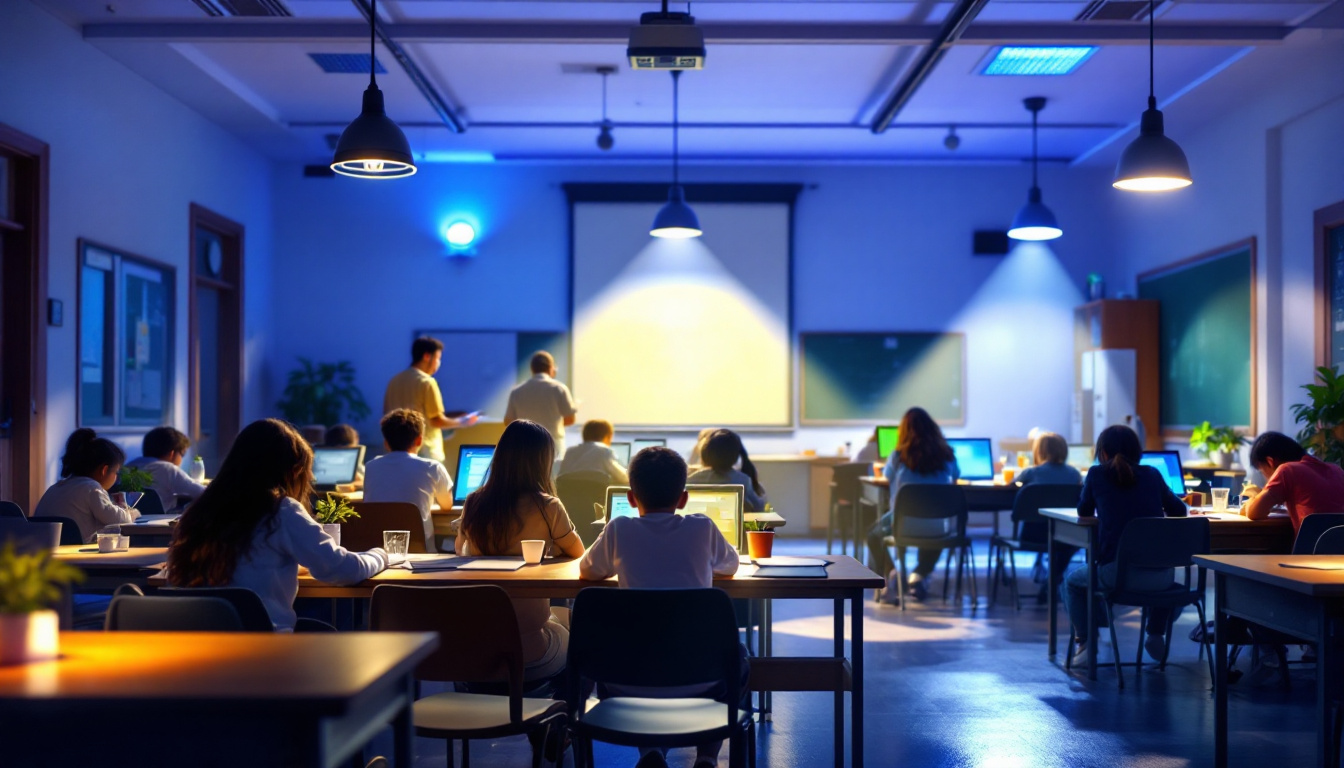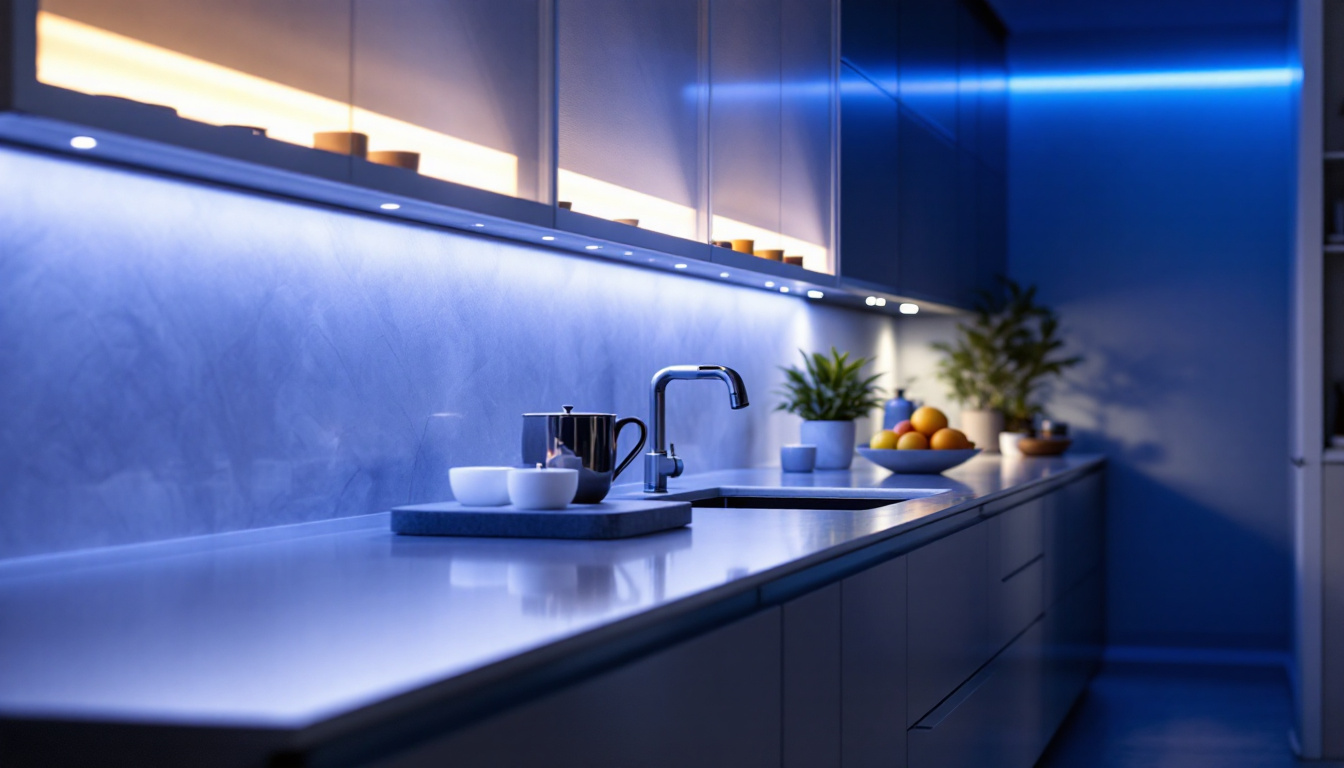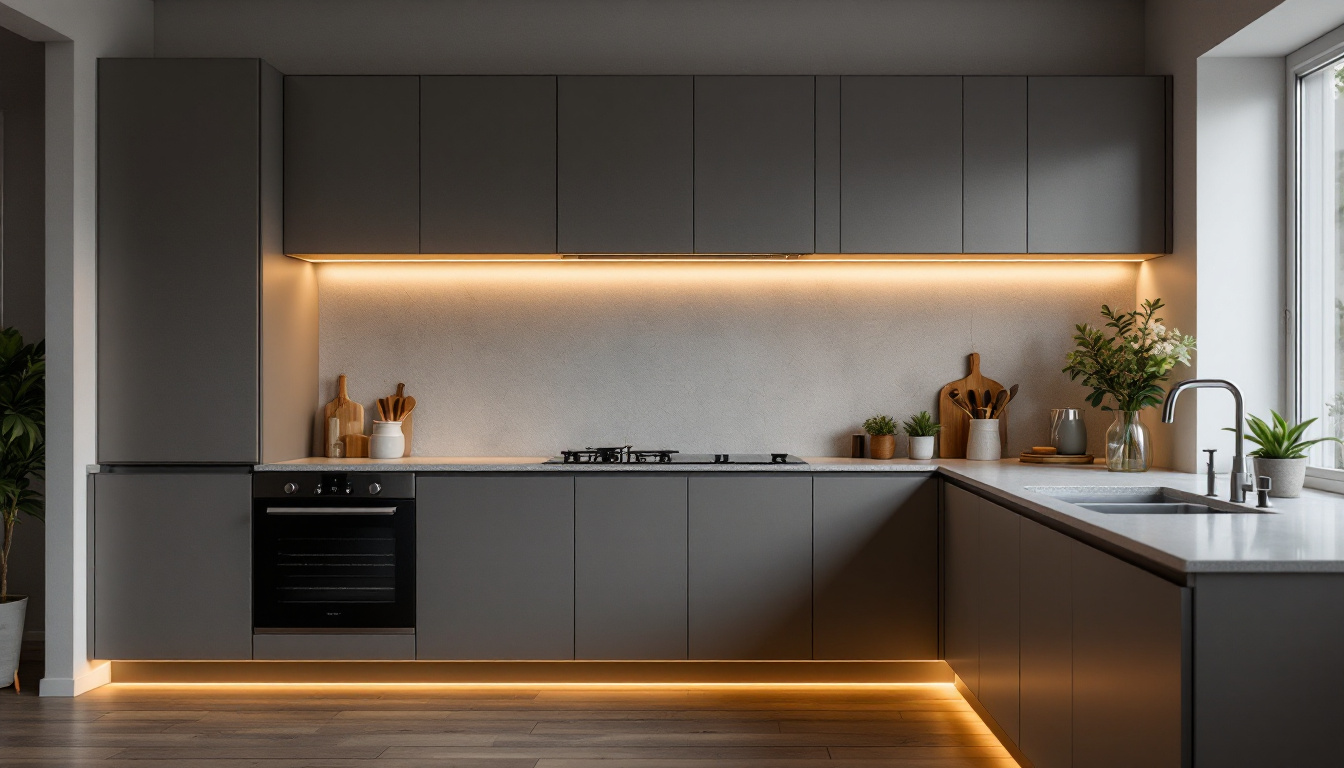

When it comes to illuminating educational facilities, the choice of lighting plays a crucial role in creating an effective learning environment. Lighting contractors face the challenge of selecting the most suitable options for schools, balancing energy efficiency, cost, and the well-being of students and staff. This article delves into the various types of school lighting, explores alternatives, and provides insights on what lighting contractors should consider when making their selections.
Schools require a unique approach to lighting due to the diverse activities that occur within their walls. Classrooms, hallways, gyms, and auditoriums all have different lighting requirements that must be addressed to ensure optimal functionality and comfort.
In classrooms, the primary goal is to create an environment conducive to learning. Adequate illumination is necessary for reading, writing, and engaging in group activities. The lighting should be uniform to avoid harsh shadows while also being adjustable to accommodate different teaching methods and activities.
Natural light should be maximized where possible, as it has been shown to improve concentration and mood. However, artificial lighting must complement natural light, especially during cloudy days or in spaces with limited windows. Additionally, incorporating dimmable LED fixtures can provide flexibility, allowing teachers to adjust the brightness based on the time of day or the specific task at hand. This adaptability not only enhances the learning experience but also promotes energy efficiency, which is increasingly important in modern educational settings.
Hallways and common areas serve as transition spaces, and their lighting should be bright enough to ensure safety while also being inviting. These areas often experience high foot traffic, making it essential to use durable lighting solutions that can withstand constant use.
Consideration should also be given to the aesthetic aspect of these spaces. creative lighting designs can enhance the school’s atmosphere and make it more welcoming for students and visitors alike. For example, using colored LED lights can create a vibrant environment that reflects school spirit or seasonal themes. Additionally, strategically placed lighting can highlight artwork or school achievements displayed in these areas, fostering a sense of pride and community among students and staff.
Gyms, auditoriums, and labs require specialized lighting solutions tailored to their specific functions. For instance, gyms need bright, even lighting to ensure safety during physical activities, while auditoriums may benefit from adjustable lighting to accommodate performances and presentations.
In laboratories, proper lighting is critical for safety and precision. Task lighting may be necessary to illuminate work areas effectively, while ambient lighting should ensure visibility throughout the space. Furthermore, incorporating smart lighting technology can enhance these specialized areas by allowing for automated adjustments based on occupancy or specific activities. This not only improves functionality but also contributes to energy savings, making it a sustainable choice for educational institutions looking to reduce their environmental impact.
Lighting contractors have a variety of options to choose from when selecting fixtures for schools. Each type comes with its own set of advantages and disadvantages, making it essential to understand their characteristics.
LED lighting has gained immense popularity in recent years due to its energy efficiency and longevity. These fixtures consume significantly less energy compared to traditional incandescent or fluorescent lights, resulting in lower electricity bills for schools.
Additionally, LED lights have a longer lifespan, reducing the frequency of replacements and maintenance costs. They also come in various color temperatures, allowing contractors to select the ideal light quality for different environments. For example, cooler temperatures can enhance focus and alertness in classrooms, while warmer tones may be more suitable for relaxation areas. Furthermore, advancements in LED technology have led to the development of smart lighting systems that can be controlled remotely, providing schools with the flexibility to adjust lighting based on occupancy and natural light levels, further optimizing energy use.
Fluorescent lighting has been a staple in educational institutions for decades. These fixtures are relatively inexpensive and provide bright, even illumination. However, they have a shorter lifespan than LEDs and can flicker or dim over time, which may be distracting in a learning environment.
Fluorescent lights also contain small amounts of mercury, raising environmental concerns. As schools strive to become more sustainable, the shift toward LED lighting is becoming increasingly common. Moreover, the installation of fluorescent fixtures often requires ballasts, which can add to the complexity and cost of maintenance. Despite these drawbacks, fluorescent lights can still be an effective choice for large spaces like gymnasiums or auditoriums, where their ability to illuminate wide areas is beneficial. Additionally, newer models have been developed to minimize flickering and improve color rendering, making them a more viable option for certain applications.
While incandescent lighting is less common in modern schools, it still has its place in certain applications. These bulbs provide warm light that can create a cozy atmosphere in spaces like libraries or lounges. However, they are not energy-efficient and have a shorter lifespan compared to both LED and fluorescent options.
Contractors should consider the specific needs of each space before opting for incandescent lighting, as the long-term costs may outweigh the initial benefits. In addition to their aesthetic appeal, incandescent bulbs can be dimmed easily, allowing for adjustable lighting levels that can enhance the learning experience during presentations or group discussions. However, with the increasing focus on energy conservation, many schools are exploring hybrid solutions that combine the warmth of incandescent lighting with the efficiency of LED technology, creating a balanced environment that meets both comfort and sustainability goals.
While traditional school lighting options have their merits, there are alternative solutions that may offer enhanced performance and sustainability. Understanding these alternatives can help contractors make informed decisions.
Incorporating natural light into school designs can significantly enhance the learning environment. Skylights, large windows, and light tubes can help illuminate classrooms and common areas with sunlight, reducing the need for artificial lighting during the day.
Natural lighting not only saves energy but also has positive effects on students’ mood and concentration levels. However, it is essential to balance natural light with shading solutions to prevent glare and overheating during peak sunlight hours.
Smart lighting systems offer advanced control over lighting conditions, allowing for adjustments based on occupancy, time of day, and natural light availability. These systems can help schools save energy by automatically dimming or turning off lights in unoccupied spaces.
Moreover, smart lighting can enhance the learning experience by allowing teachers to customize lighting for different activities, such as presentations or group work. This flexibility can lead to improved engagement and productivity among students.
Solar-powered lighting is an innovative alternative that utilizes renewable energy sources. These systems can be particularly beneficial for outdoor areas such as playgrounds, parking lots, and pathways, providing illumination while reducing reliance on grid electricity.
While the initial installation costs may be higher, solar lighting can lead to significant long-term savings and contribute to a school’s sustainability goals. Additionally, it can enhance safety by ensuring well-lit outdoor areas during evening hours.
When selecting lighting for schools, contractors must consider several factors to ensure they make the best choice for each specific environment.
Energy efficiency is a critical factor in today’s educational facilities. Schools often operate on tight budgets, and energy-efficient lighting can lead to substantial savings over time. LED lighting, for instance, is known for its low energy consumption, making it a top choice for many institutions.
Contractors should also consider the potential for energy rebates or incentives that may be available for installing energy-efficient systems, further reducing costs.
Maintenance requirements and the lifespan of lighting fixtures are essential considerations. Schools cannot afford frequent disruptions due to burnt-out bulbs or malfunctioning fixtures. Therefore, selecting durable and long-lasting options, such as LEDs, can minimize maintenance efforts and costs.
Contractors should also evaluate the ease of access for maintenance tasks, ensuring that fixtures can be replaced or repaired without significant disruption to school activities.
Safety and comfort are paramount in educational settings. Proper lighting can help prevent accidents and ensure that students and staff feel secure in their environment. Bright, uniform lighting in hallways and common areas can enhance visibility and reduce the risk of slips and falls.
Additionally, the color temperature of the lighting can impact comfort levels. Warmer light may create a more inviting atmosphere, while cooler light can enhance focus and alertness in classrooms.
Choosing the right lighting for schools involves a careful evaluation of various factors, including energy efficiency, maintenance needs, safety, and comfort. While traditional lighting options like LEDs, fluorescents, and incandescents have their advantages, exploring alternatives such as natural lighting, smart systems, and solar-powered solutions can lead to even better outcomes.
Lighting contractors play a vital role in shaping the learning environments of schools. By staying informed about the latest advancements in lighting technology and understanding the unique needs of educational facilities, contractors can make choices that enhance both the functionality and aesthetics of these important spaces.
Ultimately, the right lighting choice can lead to improved academic performance, increased well-being, and a more sustainable future for educational institutions. As the landscape of school lighting continues to evolve, contractors must remain adaptable and proactive in their approach to lighting design and installation.
Ready to enhance the learning environments with the right lighting choices? Look no further than LumenWholesale for your school lighting needs. Our spec-grade lighting products offer the quality, affordability, and energy efficiency that every educational facility deserves. With LumenWholesale, you gain access to an extensive selection of top-quality lighting solutions at wholesale prices, ensuring your projects shine without straining your budget. Plus, with free shipping on bulk orders, you can trust that you’re getting the best value with no hidden costs. Elevate your lighting installations and support academic excellence with the perfect blend of performance and price. Discover the difference at Wholesale Lighting at the Best Value today.

Discover how LED under-counter lighting is revolutionizing the projects of lighting contractors.

Discover how low voltage under cabinet lights can transform your lighting projects and help you secure more contracts.

Discover the transformative potential of LED light strips in modern lighting design.

Discover essential insights for lighting contractors on the intricacies of wall outlets.
Get notified when NEW deals are released.
Optimize your budget with wholesale discounts.
Only top-quality, specification-grade lighting products.
No additional costs at checkout - what you see is what you pay.
We understand the unique needs of contractors.